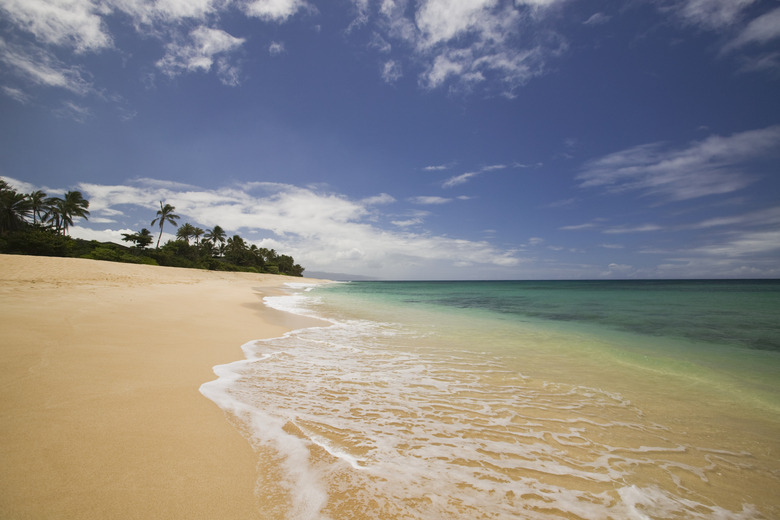Are Weathering & Erosion Harmful?
The Earth's surface changes continuously through weathering and erosion. Weathering is a combination of mechanical breakdown of rocks into fragments and the chemical alteration of rock minerals. Erosion by wind, water or ice transports the weathering products to other locations where they eventually deposit. These are natural processes that are only harmful when they involve human activity.
Scree and Talus
Scree and Talus
Water trapped between cracks on the surface of a rock freezes and thaws during seasonal and daily (diurnal) temperature changes. Water expands as its freezes, exerts pressure against a rock surface and causes it to fragment and shatter over time. When this weathering occurs on a cliff face, rock slabs will detach and slide down the slope. Slopes made up of small rock fragments are called scree, while larger rocks on the slop are called talus. Experienced climbers and scramblers understand how to climb up or slide down these slopes. But someone inexperienced in this environment can lose footing, trigger a rock fall and suffer serious injury.
Soils and Landslides
Soils and Landslides
Soils consist of minerals – sand, silt and clay – together with organic matter, water and air. Sand and silt are rock fragments that are the products of mechanical weathering and erosion by wind, water or ice. Clays are formed by chemical weathering when mildly acidic rainwater reacts with feldspar rock minerals. Earthquakes, heavy rainfall, snow and ice can loosen soils from flat and sloping bedrock. On sloping ground, however, such loosened soil can plunge downhill in a massive landslide, damming water courses and destroying human infrastructure in its path. Deforestation destroys the binding of soil to bedrock by tree roots and increases the landslide danger.
Fluvial Processes
Fluvial Processes
The Earth's most important agent of erosion is running water. Rivers cut through hard bedrock to form V-shaped valleys and canyons like the Grand Canyon. The river water picks up and erodes rocks of all types, shaping them down into sands and fine silt. Fluvial sediments consisting of sands, silts, minerals and organic matter create fertile soils when deposited along the river banks and estuaries during seasonal flooding. Human attempts to control river flooding by straightening the river course can increase erosion of river banks. The water flows faster in a narrow channel and has nowhere to flood. Housing development along former river flood plains increases the flood risk both upstream and downstream as the water searches for an outlet.
Longshore Drift
Longshore Drift
Longshore drift is the combination of wind and wave action that erodes coastlines and creates sand spits. Eroded sediment is carried by ocean waves that move along the coast in the direction of prevailing winds and is deposited further down the coast. In the natural world, beaches, barrier islands and sand spits are temporary features that migrate along a coastline. Attempts by local authorities or householders to stabilize beaches through the construction of jetties, sea walls and groins merely displace the erosion further along the coast where it could endanger housing or other structures.
Cite This Article
MLA
Kielmas, Maria. "Are Weathering & Erosion Harmful?" sciencing.com, https://www.sciencing.com/weathering-erosion-harmful-23923/. 24 April 2017.
APA
Kielmas, Maria. (2017, April 24). Are Weathering & Erosion Harmful?. sciencing.com. Retrieved from https://www.sciencing.com/weathering-erosion-harmful-23923/
Chicago
Kielmas, Maria. Are Weathering & Erosion Harmful? last modified March 24, 2022. https://www.sciencing.com/weathering-erosion-harmful-23923/
